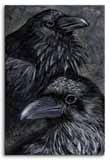|
|
|||||

|
Digging Composition 2 [slide 2 (slide 1 was the title and contact information)] With a few notable exceptions, most MOO scholarship
revolves around three issues:
[slide 3] All three issues are unified by their focus on MOOs as synchronous discussion space. Even Cynthia Haynes and Jan Rune Holmevik, in their discussions of MOOs as “Architextual” space in the introduction to High Wired and David Jay Bolter in his discussion of MOOs in Writing Space: Computers, Hypertext, and the Remediation of Print, regard MOOs as synchronous discussion spaces. While MOOs do allow us to explore these issues, and while MOOs are, in their design, synchronous discussion tools, the ability for users to construct permanent spaces and objects, spaces that can be explored and interacted with by others, make MOOs an ideal writing space for the creation and presentation of permanent, interactive, writing projects. Today, I want to talk about MOOs as a writing space. Digging 1 | Digging 3 | Digging 4 | Digging 5 | Digging 6 | Digging 7 | Digging 8 | Digging 9 | Digging 10 |
||||
|
|||||